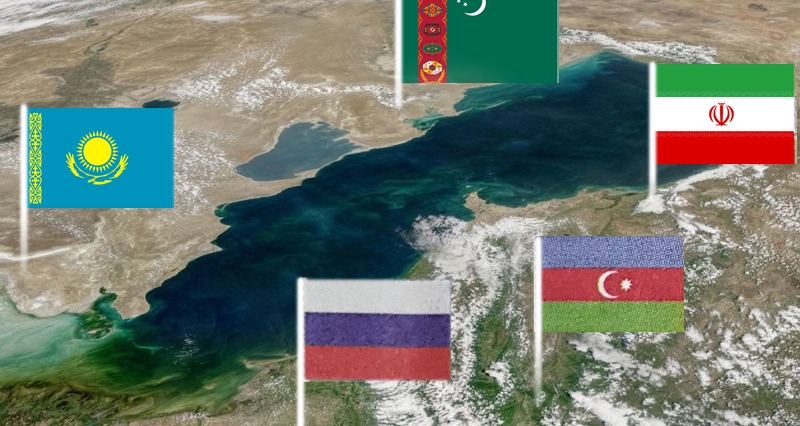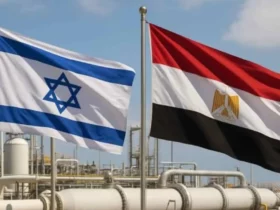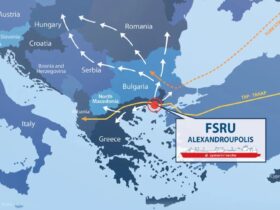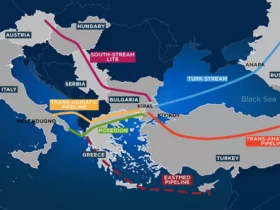Negotiations for the Caspian Sea legal regime began almost immediately after the collapse of the former Soviet Union, but at the beginning of the process there were no negotiations on a single text. Prior to that, Iran and the Soviet Union used this sea commonly, though in practice the Soviet Union, by using its power in this regard and the extent of its usefulness, reduced the area that Iran was supposed to be practically 50%. But in general, the agreement with the Soviet Union and subsequent agreements have not yet indicated the percentage or number of Iranian shares or limits. Negotiations became even more serious when a group was formed around 1996 to formulate a legal regime for the Caspian Sea.
The Caspian Sea has a coastline of six thousand and five hundred kilometers. The Treaty of Turkmenchay is the first treaty to address the issue of the right to navigate the Caspian Sea. The second official Iran-Russia treaty on the Caspian Sea legal regime dates to February 21, 1828 and the Treaty of Turkmenchay. The treaty was signed following Iran’s defeat in the South Caucasus and Azerbaijan war. Another 250,000 kilometers of coast was lost under the Qajar government. As regards the rights of the sea, the terms of the Golestan Treaty were also agreed and the right of military presence in the sea was granted to Russia exclusively.
On March 25, 1940, the two sides signed a treaty establishing maritime laws in the sea. The agreement also included a 10-mile boundary between the sea, the territorial waters of Iran and the Soviet Union, and the right to fish on the coast became a monopoly of the coastal state.
The proposed Russian classification is to divide the Caspian Sea along a straight line and to consider sea level as a common area. The straight line or the crossing is the deepest navigable point of water zones between countries and the boundaries are determined by it. Iran, on the other hand, calls for an equal division of the sea into 5 per cent of 20 per cent and each of those shares to the coastal states.
THE CONVENTION ON THE LEGAL STATUS OF THE CASPIAN SEA
After two decades of discussion and debate over the Caspian’s legal regime, the Caspian Sea Legal Convention was finally adopted by five coastal leaders in August last year at the Kazakhstan Aktau Summit. One of the important issues agreed at the meeting was the determination of the legal status of the Caspian Sea. According to Article 5 of this Convention, “the determination of the Caspian Sea and seabed into parts shall be by agreement between states with adjacent and opposite coasts, taking into account generally recognized principles and rules of international law in order to enable those states to exercise their sovereign rights.”
One of the key principles adopted at the Aktau summit was the absence of foreign military ships that Iran and Russia had emphasized at every meeting in the past two decades. Iran’s security concerns over the use of third-country states against Iran were largely eliminated by the ratification of the legal convention.
According to the Convention on the legal status of the Caspian Sea, Turkmenistan has the right to use its own waters and Azerbaijan to draw the pipeline, and this issue does not require the agreement of two coastal states and should only be made on the basis of environmental standards between Azerbaijan and Turkmenistan. The important point is that, in principle, there is no need for a Trans Caspian pipeline. Azerbaijan is currently producing oil and gas from the Azeri-Cheragh-Gunsheli fields in the heart of the Caspian Sea and very close to Turkmenistan’s fields, and by connecting these fields to each other, all infrastructure for the transfer of gas from these fields to Baku and from there to Europe is ready. It is enough to connect Turkmenistan to the Azerbaijani fields with the pipeline and to enable export of at least 2 billion cubic meters of gas annually to Europe at a low cost.
WHAT ARE THE BENEFITS OF A SIGNED CONVENTION FOR IRAN?
The new Caspian Legal Regime Convention recognizes the possibility of using two Russian Volga-Dan channels that connect the Caspian to the high seas. In recent years, especially during international sanctions and at times when Iran-Russia relations have not been warm, Iran has faced serious obstacles from Russia in delivering its free-water vessels to the Caspian. The new convention on the use of these two channels, recognizing Russia’s interests, recognizes the rights of coastal states, including Iran.
In addition, due to the short length of the Iranian coast, its share in the Caspian Sea could be reduced by up to 11%. The new Convention on the Legal System of the Caspian Sea states that the unfavorable shape of the coasts of countries should be taken into account in determining the frontier lines. In this sense, the Republic of Azerbaijan and Turkmenistan, in the forthcoming negotiations with Iran to determine the maritime areas, cannot utilize the shore of Iran as a pretext for reducing Iran’s share of Caspian Sea. In this respect, not only has Iran’s territorial integrity been betrayed, but the new Convention even has better terms for Iran than previous agreements in the Caspian Sea.
IRANIAN OIL AND GAS RESOURCES IN THE CASPIAN
Most of the oil and gas fields in the Caspian are located in shallow areas and have been exploited so far. Iran’s oil and gas resources are located at a depth of 2 meters in the Khuza Sea. This has led to the high economic and technical risk of investing in Iranian oil and gas fields in the Caspian Sea.
SARDAR JANGAL OIL FIELD
Sardar Jungle field, Iran’s only oil field in the Caspian Sea, lies at a depth of 2 meters. The oilfield has two billion barrels of oil, with an estimated five hundred million barrels of oil. The field’s natural gas reserves are estimated to be fifty trillion cubic feet. After signing the brokerage agreement, Tehran negotiated with Russia’s Lukoil, Norway’s Statoil and Maersk to invest in Iranian-owned fields in the Caspian Sea, but due to the depth of those fields and US sanctions, it failed to raise the capital and technology needed to produce it.
IRAN-AZERBAIJAN OIL COOPERATION IN THE CASPIAN SEA
In 2006, Iran and the Republic of Azerbaijan signed a Memorandum of Understanding on Cooperation in Exploration and Extraction in Two Large Alborz Blocks (ELO) and another block in the Caspian Sea. Iran hoped that by signing the treaty, political tension in the Caspian Sea would be reduced and it would eventually be able to extract energy from the Caspian Sea.
The major obstacle to the development of Iranian fields in the Caspian Sea is technological constraints. At the same time, after the collapse of the Soviet Union, the Republic of Azerbaijan provided the conditions for the investment of international oil and gas companies, and their high capacity enabled Azerbaijan to accelerate operations in its fields in the Caspian Sea.
The lack of advanced technology for deep-water drilling and the lack of the necessary financial resources have made Iran, like the rest of the Caspian coast, unable to produce oil and gas. Increasing presence of foreign energy companies in Caspian oil and gas fields is not pleasant for Iran. Increasing the share of countries like Turkmenistan and Azerbaijan in the regional and global gas market means reducing the share of other major gas producing countries.
Iran’s top priority has been to invest in joint fields in the south and given the physical conditions of the oil fields in the Caspian, one should not expect Iran to extract oil from those fields in the short term. Without foreign capital and technology, Iran’s use of Caspian energy resources is not easy.
If the Caspian Sea Convention is ratified by the parliaments of the five coastal states, it will be implemented, and, on that basis, Iran will try to take steps in that regard. However, the continuation and intensification of US sanctions will remain a major obstacle to attracting foreign investment and technology.
WILL IRAN’S SHARE FALL BELOW 20%?
According to the Convention on the Legal Status of the Caspian Sea, all four coastal states have the right to have a territorial sea area of 4 miles wide, and all coastal states must agree on the details and designation of the territorial sea route. The territorial sea is a part of the territory of each country and is under its control. To calculate the territorial sea, the coastal country must use a regular or direct line of reference, depending on the geographical shape and the coordinates of its coast. The regular line of departure applies to coasts that have a regular coastline, without troughs and without irregular geographical phenomena, and there is no island near their coast. In this case, the source line is placed at the lowest tide point.
The source line in these cases is near the shoreline, and the amount of seawater behind the shoreline is inland water. Another approach is the direct line of departure, and is used for coasts that have numerous troughs or other irregular geographic phenomena or have several islands near them. In this case, the direct line of departure will be drawn outside and immediately after these troughs, bays or islands.
Iran believed it should have at least 20% of the Caspian Sea, but last year Ibrahim Rahimpour, a former deputy minister for Asia, Oceania and the Commonwealth of Independent States, including Russia and some other former Soviet countries, criticized Iran’s Foreign Ministry. Some inductees have stated publicly that half or 5% of the Caspian Sea is Iran’s share, “These words are inconsistent with international and legal logic and it is unclear where these inductions originate.” Previously, Iran claimed a 5% share of the Caspian. This is now resolved by the Convention of the Seas, by the straight line and the shape of the borders. “Where the fair line goes, there are still differences between Turkmenistan and Azerbaijan, let alone Iran.”
The other four Caspian countries could use a direct line of sight because of the shape of their coasts, and their inland waters would be much larger than Iran. However, using a regular baseline is the system that should be applied to Iran. But Article 7 of the Caspian Sea Legal Regulations clearly states that countries without proper coasts should be given special status. As a result, despite the uncertainty of geographical conditions, fortunately for Iran, the next five-day talks to determine the baseline are on an equal footing with other countries and it can insist on a more appropriate baseline.
For this reason, all the necessary forecasts have been taken into consideration so that the coastal states cannot agree without the consent of other countries through the conclusion of bilateral agreements. However, bilateral agreements on the issue of seabed and coastal rights are not at issue and only the division of the Caspian Sea sovereignty must be in agreement with all five coastal states.
ZARIF: CONVENTION ON THE LEGAL STATUS OF THE CASPIAN SEA PROVIDES THE INTERESTS OF THE ISLAMIC REPUBLIC OF IRAN
Responding to the delegates’ question about the Caspian Convention, Mohammad Javad Zarif said: The first issue in this regard is the sensitivity of the Islamic Republic of Iran to the territorial integrity and independence of the country. If you look at contemporary Iranian history, the only government that has not even negotiated away a single inch of Iranian soil and water is the Islamic Republic. If we look at the previous dynasties, parts of Iran were separated in each period, but after the revolution no part of the country was separated despite the imposed war and this is an honor for the leader of the revolution and the people of Iran.
During these two years different protocols for aquatic conservation and environmental issues have been put forward and approved. The Convention went through the final stages of Year 2 and 3 and entered the domestic process. Of course, ratifying this convention in year 2 does not mean that it was negotiated in year 2 but that it was negotiated for two years and that the principle had been passed from year 1 to year 2 and that it had been submitted for signature only during the legal process. However, ratification of the Convention itself is clear that the legislative process must be followed, so that when the government goes through the initial stages, it will submit it to Parliament for ratification.
The fact is that majority of the Caspian Sea Legal Regulations Convention has been finalized in Aktau, with only two remaining lines of origin and delimitation that require further negotiation and interaction between member states, but this does not mean that all the details are finalized. First, the negotiations on the methods of drawing the direct line of origin should be finalized, then, based on that, the delimitation legal regime in the form of a five-party agreement must be drawn up. The bill was submitted to the Islamic Consultative Assembly for final approval, with none of these steps yet.

















Leave a Reply